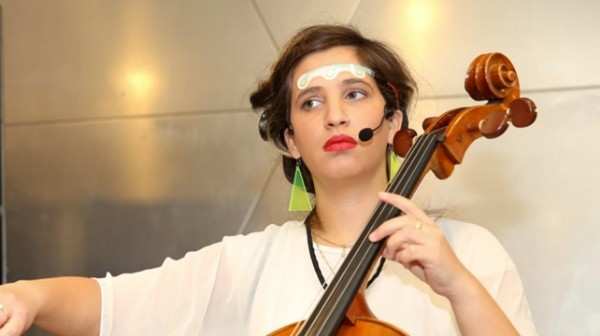Abstract
Musicians and music scholars habitually discuss tonal relationships in terms of cross-modal metaphors, associating tonal function or tonal tension with percepts such as physical gravity, spatial location, or visual brightness. While cross-modal mappings for basic auditory dimensions (e.g., pitch height, loudness) have received ample scholarly attention, little empirical research has tested whether cross-modal metaphors for tonal relationships are grounded in perceived cross-modal correspondences (CMC). My PhD research examined whether CMCs between tonal stability and several non-auditory dimensions, including visual brightness, visually depicted emotion (facial expressions), visual size and spatial location (vertical and horizontal) may be reliably established. Each CMC was examined using explicit and implicit paradigms, investigating both musically trained and untrained participants. We thus aimed to investigate whether such correspondences exclusively rely on conscious, intentional strategies, and to what degree they rely on expertise and conceptual knowledge.
For each dimension, two experimental paradigms were used, examining explicit and implicit CMC of tonal stability. In the matching experiments, adapting Krumhansl's probe-tone paradigm (Krumhansl & Shepard, 1979) participants matched each tonal degree into a visual dimension. In the implicit association experiments, adapting Parise and Spence’s (2012) version of the Implicit Association Test (IAT), participants speeded response to congruent matchings of the two dimensions was compared to their response to the incongruent ones.
Results indicated that tonally stable tones, compared with unstable ones, are associated with higher visual brightness, happier emotional expressions and higher and more left-handed spatial positions. No concrete association was found with physical size (though for musicians there was an interesting interaction between size and horizontal direction). These results apply both explicitly and implicitly. However, while explicit associations were modulated by musical experience, implicit associations were not. The results demonstrate how seemingly abstract musical structure may establish concrete connotations to non-auditory perceptual domains, updating music theoretical notions regarding music tonality. More generally, these results may suggest a hitherto unexplored path associating syntactical structure with connotative meaning, a relationship calling for further exploration in other domains, such as language.
Bio
Neta Maimon is a doctoral candidate in the Department of Cognitive Psychology in the School of Psychology at Tel-Aviv University. She has two master’s degrees, one in Cognitive Psychology and one in Musicology from Tel-Aviv University, and a BMus in Cello Performance from the Jerusalem Academy of Music and Dance. She currently lectures in the School of Psychology at Tel-Aviv University, teaching two undergraduate courses on music cognition and perception & psychophysics.
